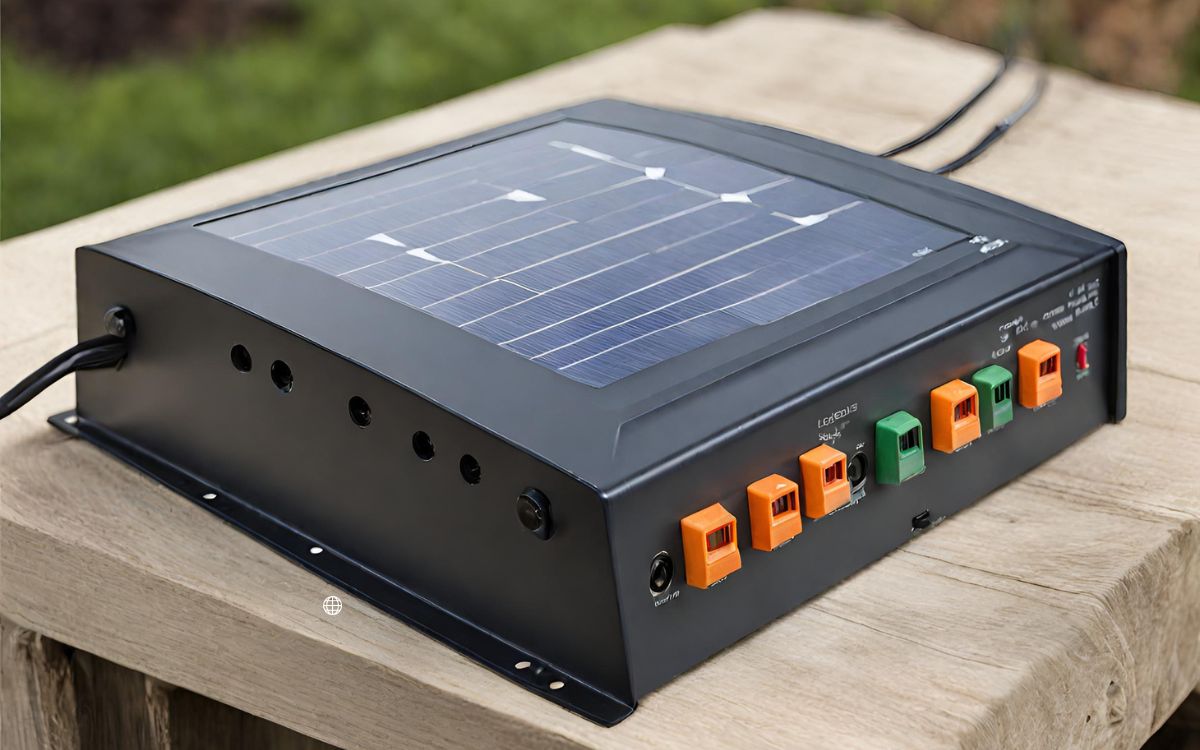
How to Choose the Right Size Solar Charge Controller

When sizing your solar charge controller, you need to consider three primary ratings: battery bank voltage, solar panel input voltage, and the charge controller’s output current.
-
Battery Bank Voltage: This is the voltage of your battery bank. Your controller should support your bank’s voltage, whether it’s 12V, 24V, 36V, or 48V.
-
Solar Panel Input Voltage: This is the maximum input voltage that the charge controller can accept from the solar array. Under-sizing your charge controller’s input voltage could damage it and void its warranty. A solar array of at least 18V is recommended for the proper operation of your charge controller.
-
Output Current: This is how much current the charge controller can output, typically given in Amps. To check if the charge controller works for your system, divide the total wattage of your solar array by the voltage of your battery bank. For example, a 2000W solar array ÷ 36V battery bank = 55.6A. The rating of the charge controller should be at least 55.6A.
For PWM: Take solar array wattage and divide by 10 to 15 for 12V systems, or 20 for 24V.
For MPPT: Take solar array wattage and divide by 12V or 24V. Add 25% buffer for cold weather conditions. Round up to the next size controller.
For example, for a 300W solar array on a 12V system using MPPT: 300W / 12V = 25A. Add 25% = 31A. Round up to a 40A or 50A controller. Oversizing the solar charge controller capacity allows room for expanding your solar array later.
Can You Use a US Solar Charge Controller in the UK?
Yes, a solar charge controller made for use in the US can generally also be used without issues in the UK. Solar charge controllers regulate the voltage and current coming from solar panels going to batteries to prevent overcharging and damage. The key factors that determine compatibility are the voltage and power ratings, not whether it is made for US or UK specifically.
The main considerations when selecting a solar charge controller are:
-
System voltage - Most residential systems use 12V or 24V batteries. Controllers should match the voltage of the batteries.
-
Solar array power - Add up the wattage of all solar panels connected to the controller. Select a controller rated for at least that amount of power.
-
Battery capacity - Match the controller capacity to the battery bank size. A general rule is take the battery capacity in amp-hours and multiply it by 0.2 to get the charge controller size in amps.
-
Features - Consider MPPT vs PWM, LCD display, remote monitoring options, etc based on your needs and budget.
As long as the solar charge controller is rated for the proper system voltage, solar array wattage, and battery bank capacity, it will work correctly in either the US or UK. The solar irradiation levels and weather conditions do not affect the controller function.
What Happens If Your Solar Charge Controller Is Oversized

Choosing the correctly sized solar charge controller is crucial for an efficient off-grid solar system. However, many people wonder if issues arise from having an oversized charge controller. While a larger solar charge controller may seem beneficial since it allows room for expanding your system, there are some potential downsides to oversizing.
Risk of Overcharging the Batteries
One of the main functions of a charge controller is to prevent overcharging of the batteries by limiting the current flowing into them.
With an oversized solar charge controller, there is excess unused capacity which can lead to the batteries receiving more current than they can handle if conditions are optimal. This leads to overcharging issues over time, generating excess heat and gases which reduces battery life.
Higher Upfront Costs
Larger solar charge controllers that exceed the requirements of the system often cost significantly more money upfront. This unnecessary additional expense could have been better utilized to purchase higher-quality batteries or solar panels for improved efficiency.
Underutilization and Energy Wastage
Since an oversized charge controller has unused capacity not being leveraged, it leads to underutilization and wasting potential energy generation. The charge regulation prevents the solar panels from providing their maximum output unnecessarily.
Compatibility Issues
It’s vital to ensure the oversized solar charge controller is fully compatible with the solar array, batteries, and overall system specifications to prevent any system failures or inefficiencies.
Key Takeaways About Sizing Solar Charge Controllers
In most cases, oversizing the solar charge controller provides no real advantages but leads to higher costs and suboptimal system performance. When sizing your charge controller, it’s best to follow the calculations and round up the required capacity by 20-25% for overhead. This provides sufficient headroom for expansion and environmental fluctuations without excessive oversizing. Consulting a solar specialist can ensure ideal charge controller sizing tailored to your system needs while avoiding size-related inefficiencies.
What Size Charge Controller for 400w Solar Panel?
With a 400W solar panel, a 40A MPPT charge controller with at least 60V input rating provides ideal voltage regulation and harvesting power.
As a general rule, the average 400W solar panel has a current output of 10 amps and an open circuit voltage of 50 volts. Therefore, a charge controller with an input rating of 60 volts and a current rating of at least 20 amps would be required.
A 40A MPPT controller would be an appropriate choice to allow room for potential system expansion. Popular brands like Renogy, Victron, and others make high-quality MPPT controllers in this size range
Examples from Known Brands
PowMr
PowMr, a renowned brand in the solar industry, suggests that a 400W solar panel requires a charge controller with an input rating of 60 volts and a current rating of around 20 amps. They also recommend using MPPT (Maximum Power Point Tracking) charge controllers over PWM (Pulse Width Modulation) ones due to their higher efficiency and flexibility.
HPC
HPC offers a 400W MPPT Solar Charge Controller that is compatible with a wide range of battery voltages (48V, 52V, 63V, 74V, 86V). This controller can handle a 400W load using a 36V solar panel, meaning it can charge a standard 48V 10AH battery in roughly 1 hour.
Renogy
Renogy, another well-known brand in the solar industry, offers a 400W 12V General Off-Grid Solar Kit that includes a 40A MPPT charge controller. This kit is designed to provide a comprehensive solution for those looking to set up an off-grid solar system.
HQST
HQST offers a 60A MPPT Solar Charge Controller with features like Li-Ion Battery Low Temp Protection, Parallel Charging, and Bluetooth. This controller is capable of handling larger solar setups and offers advanced features for monitoring and control.